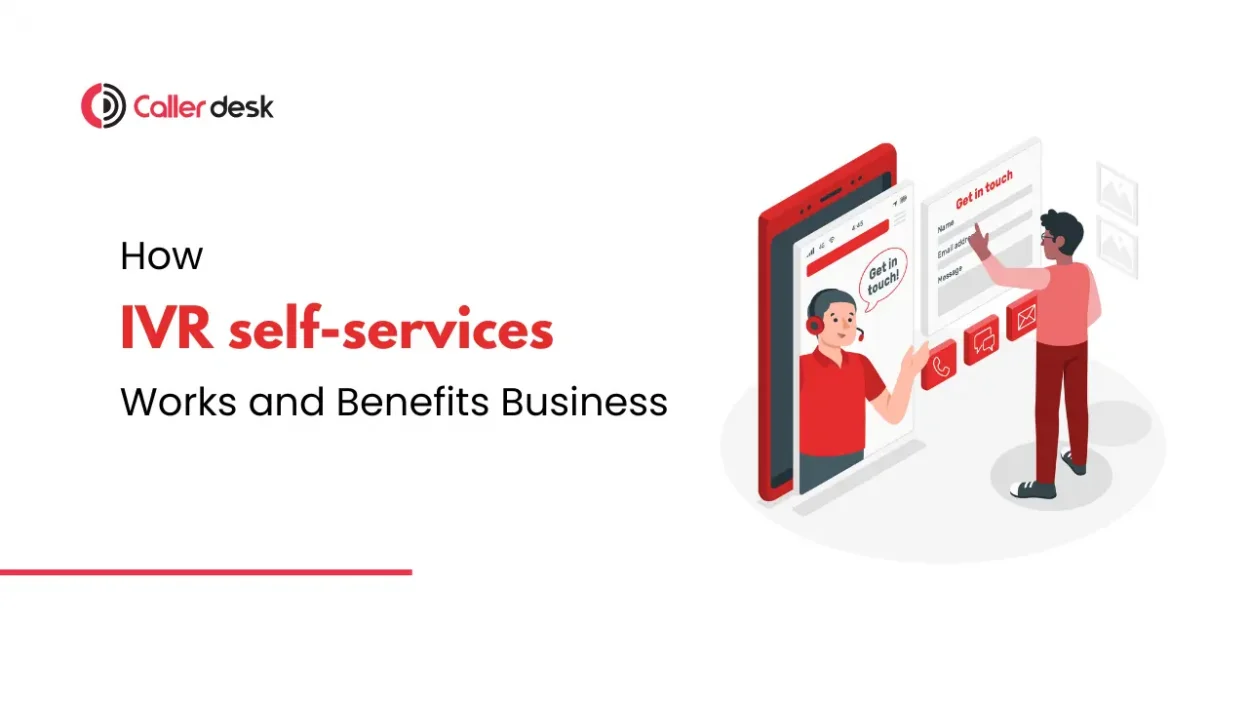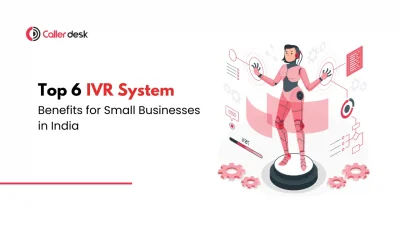Ever called a business and instantly got the help you needed—no waiting, no frustration? That’s the magic of IVR self-service. Instead of waiting on hold, customers can use an IVR menu to get answers, make payments, or connect with the right department—all without speaking to a human agent.
A good IVR phone system not only makes customer service faster but also saves businesses time and money by handling calls more efficiently. Whether you’re running a small business or a large company, the right interactive voice response system can improve customer experience and reduce workload.
In India, more businesses are switching to IVR self-service solutions to provide 24/7 customer support, reduce costs, and speed up response times. Curious about how it works and why it’s so effective?
Lets explore.
What is IVR Self-Service?
IVR self-service is a phone system that helps customers get information or complete tasks without talking to a live agent. When someone calls a business, they can use voice commands or press numbers on their phone to check their account, track an order, make a payment, or connect to the right department.
This makes customer service faster and easier while also helping businesses save time and reduce costs. Instead of waiting on hold, callers get quick answers, and support teams can focus on more important issues. It’s a simple way to improve customer experience and efficiency.
How IVR Self-Service Works
Step 1: User Interaction
When a customer calls a business, the self service IVR system answers with an automated greeting. It then provides an IVR menu with options like:
- Press 1 for account details
- Press 2 for customer support
- Press 0 to speak with a live agent
This self-service IVR makes it easier for customers to find what they need without waiting on hold.
Step 2: Automated Response System
Once a customer selects an option, the IVR phone system provides automated responses through pre-recorded messages.
Advanced interactive voice response systems even support speech recognition, allowing customers to speak their choices instead of pressing buttons. This makes the experience smoother and more convenient.
Step 3: Call Routing and Management
After understanding the customer’s request, the IVR self service directs the call to the right department or agent. If integrated with a CRM, it can recognize returning customers and retrieve their details instantly-leading to faster and more personalized support.
Benefits of IVR self service
1. Enhanced Customer Experience
Nobody likes waiting on hold. IVR self-service allows customers to get instant responses and 24/7 support without needing a live agent. Whether it’s checking an account balance, tracking an order, or making a payment, they can get answers anytime—boosting satisfaction and loyalty.
2. Cost Efficiency
Why spend on a large support team when IVR can automate routine tasks? By handling common customer queries, businesses can cut operational costs while managing more calls without hiring extra staff. It’s a smart way to scale customer service without increasing expenses.
3. Increased Efficiency
Time is money, and an IVR phone system saves both. It routes calls to the right department instantly, reducing misrouted calls and long wait times. The result? Faster resolutions, happier customers, and a more productive team.
4. Data Collection and Insights
Want to understand your customers better? Interactive voice response systems collect data on customer preferences and behaviors, helping businesses improve services and refine strategies. This real-time data helps businesses stay ahead of the competition.
5. Multilingual Support
India is home to multiple languages and dialects. An IVR self-service solution that offers support in regional languages makes every customer feel valued. Language-based routing ensures callers get help in their preferred language, leading to better engagement and satisfaction.
6. Scalability for High Demand
During festivals, sales, or peak hours, call volumes can surge. A scalable IVR calling system manages high traffic smoothly, ensuring customers get seamless service even during busy times. No more overloaded call centers or frustrated customers.
IVR self service best practices
1. Clear and Easy Menu Options
Nobody likes a confusing IVR menu. Keep options short and easy to understand. Instead of saying, “Press 1 to connect with our customer relationship management department,” just say, “Press 1 for support.”
A simple IVR menu ensures customers quickly find what they need without frustration.
2. Personalized Customer Interactions
Make your IVR self-service smarter by using customer data. Greet callers by name or offer relevant options based on their history, such as tracking an order or checking a balance. Personalization makes interactions more engaging and improves the customer experience.
3. Regular Updates and Maintenance
An outdated IVR phone system can frustrate customers. Regularly update it with new product information, promotions, or business hours. Keeping your system fresh ensures smooth operation and accurate information.
4. Monitoring and Optimization
Track your IVR calling system’s performance using analytics and customer feedback. Look at key metrics like call drop-off rates, common inquiries, and time spent on each menu. Use this data to optimize call flows, update prompts, and improve efficiency.
5. Offer a Quick Exit to Speak with an Agent
Not all customers want to interact with an automated system. Always offer a way to quickly connect with a live agent by saying, “Press 0 to speak with a representative.” This ensures customers who prefer human support don’t feel stuck.
6. Use Multilingual Support
India is diverse, and your IVR should be too! Providing support in multiple languages makes customers feel comfortable and valued. Let callers choose their language at the start of the call for a smoother experience.
7. Test the System Before Launching
Before going live, test your IVR self-service solution with real customer scenarios. Identify bugs, confusing menu options, or unnecessary steps. A well-tested system ensures frustration-free interactions.
8. Make Self-Service Options Clear
Don’t leave customers guessing! Clearly state what tasks they can complete. For example, “Press 1 to check your balance, Press 2 to track your order.” The more transparent you are, the faster customers can solve their issues.
9. Optimize Call Routing
Ensure calls reach the right department quickly. Misrouted calls waste time and frustrate customers. Use data-driven call routing to connect callers with the most relevant agent or department.
10. Incorporate Natural Language Processing (NLP)
Want a more advanced IVR experience? NLP technology lets customers speak naturally instead of pressing buttons. For example, instead of saying “Press 1 for balance,” they can just say, “I want to check my account balance.” This makes interactions smoother and more user-friendly.
Conclusion
IVR self-service is a powerful tool for businesses that want to improve customer service and make operations more efficient. It helps customers get quick answers, reduces wait times, cuts costs, and provides 24/7 support without needing a human agent for every call.
To make the most of your IVR system, focus on:
- Keeping the menu simple and easy to use
- Personalizing interactions for a better customer experience
- Updating the system regularly with accurate information
- Tracking performance to improve efficiency
For businesses in India looking to upgrade their communication, IVR self-service is a great solution. Choosing the Right IVR Service provider ensures a smooth setup and reliable performance.
Request a demo today and see how CallerDesk can help your business!





